Interview with Danny Greenhalgh about „The Tongue of Solomonescu”
Cristian: The title „The Tongue of Solomonescu” is intriguing. Can you tell us about the inspiration behind it? Who or what is Solomonescu?
Danny: The title comes from an anecdote in a Gestalt Therapy book by Fritz Perls about a college student who couldn’t make friends. He’d hear his neighbors being called out by their friends, and one night he was found calling his own name under his window. When I picture it, he’s always shouting „Danny!” Solomonescu is a trickster character who appeared in a dream and kissed me. The disgust and shame I felt became the catalyst for this series. That sense of disgust and shame, particularly surrounding the yearning for acceptance and admiration, is a major theme. It reveals a fear of exposure; presenting myself to the world, especially verbally, terrifies me.
Solomonescu is the bringer of the dream/images. The mycelium imagery suggests the unconscious, even transpersonal, workings of an idea, and the mushrooms, its fruition. If the Judgement of Solomon was actually the Judgement of Solomonescu, he would have ordered the baby to be cut in three, with one third being his own share. „The tongue of Solomonescu” refers to his language. It sounds more appropriate in Romanian – Limba lui Solomonescu. With the sticking of his tongue in my mouth, he is giving me a language to communicate in. Communication, specifically my difficulty communicating, is a theme throughout. I live in Romania but can’t speak the language – this feels like an extension of my life-long inability to transmit my message.
Cristian: How does this exhibition translate or expand upon your illustrative style? Are you working in the same mediums, or exploring new ones?
My illustration work is done in ink and colored digitally. Until six years ago, I worked exclusively on illustration and was developing my style. Then I decided to become a painter. I stopped developing my illustration style – it’s at a level where I can create acceptable work. The energy required for development went into painting, all of which are acrylics. There are similarities between the paintings and the illustrations, particularly the sensibility and humor. My work is becoming more painterly – rougher, playing with texture, less tight and precise. The painting of the sword swallower for the „Sharp Objects” exhibition at the Faculty of Philosophy is a good indication of where I hope to go with it.
Cristian: What overarching themes or messages do you hope to convey through this exhibition?
Danny: The exhibition explores the interplay of identity, shame, and vulnerability; the uncanny recognition of ourselves in others; emotions we often suppress – anxiety, disgust, and the yearning for acceptance; confronting the outcast within; the tension between our public personas and our vulnerable selves; difficulty communicating and isolation. Humour is a big part of the work.
Cristian: How has living in Romania influenced your artistic style and the subject matter of this exhibition compared to your previous work in Ireland? Are there specific Romanian elements, stories, or cultural aspects that have woven their way into the exhibition?
Danny: I was unsure about exhibiting in Romania. I wasn’t sure if my work would fit. I haven’t seen much work like this here, and the Romanian people I showed it to were unimpressed. But it fits with a lot of the work being made in Ireland. I was thrilled to receive your invitation and to see that there is a place for my work here, as it fits in many ways with the works produced by your artists at 1001 Arte, alongside whom I am also exhibiting in the group exhibition at the Faculty of Philosophy. I like the works of Mihai, Radu, Irina, Alex, Ranga, Benterez, Bianca, Beaver, Adelina, Ana, Theodor (hope I didn`t miss anyone) and the fact that the language barrier is no longer there when we meet at the gallery with you and Victor as hosts.
The paintings „The Skipper” and „The Pig Always…” are companion pieces and can be seen as a combination of two traditions. They are two scenes of a sacrificial ceremony by a druid (Celtic priest). I put the pig as a viewer of the sacrifice because I took part in tăierea porcului a couple of times, and it made a massive impact on me. The parallelism in the two paintings (the pig and I have the same pose) implies a relation between us.
The „Lotus Baby” painting has something to do with the vague sense of grief passed onto me in the womb: when my mother was eight months pregnant with me, her mother died. In the painting, there is coliva placed beside my granny’s photo. In Romania, there is a much greater culture around death and mourning than in Ireland.
One of the druids in the parade is holding a Romanian-English dictionary (in reality, it would be a religious text). It seemed like a funny thing to put in at the time with no real basis, but it fits perfectly with the theme of communication difficulties and language. Solomonescu may be a Solomonar as you first thought it was, but I see him as benevolent.
Cristian: Is there a narrative thread connecting the individual pieces in the exhibition? If so, can you give us a glimpse into that narrative?
Danny: It’s not a coherent narrative, rather a group of related scenes. There’s the reception, stranger, and parade. I enter the reception, my wife is the motel receptionist, a Hekate figure, the gatekeeper of the underworld, and she gives me a key with a symbol based on the Pluto symbol. After changing clothes many times, I meet a man in the hall I recognize but can’t quite grasp. It’s a cousin I admired and wanted to be friends with, but he rejected me. The family all loved him, and I felt inferior. The parade of neo-druids passes through the hallway.
Then there’s „The Laugh” and „The Rainmaker.” In „The Laugh,” the doll gets insulted because she thinks she’s a singer but he thinks she’s talentless. In „The Rainmaker,” the figure at the front is Mickey Rourke, the woman praying is his wife, and the man pissing is linked to the man laughing at the doll. The piss flows towards the woman, forming a river, so he is the real rainmaker.
„The Kite Flyers” shows someone I admire flying a kite well. I’m pissed because my kite won’t fly. The man with the doll wants a turn, but I won’t let him, so he threatens the doll.
„The Outbreak” is the closing scene, a release of tension. It’s a dancing plague. The dynamic between Lenin and St. Vitus alludes to my fear of public speaking and nervousness.
Ro version
Interviu cu Danny despre „Limba lui Solomonescu”
Cristian: Titlul „Limba lui Solomonescu” este intrigant. Poți să ne spui despre inspirația din spatele lui? Cine sau ce este Solomonescu?
Danny: Titlul vine dintr-o anecdotă dintr-o carte de Terapie Gestalt de Fritz Perls despre un student care nu-și putea face prieteni. Auzise adesea cum vecinii lui erau chemați afară de prietenii lor, iar într-o noapte a fost descoperit strigându-și propriul nume sub fereastra lui. Când îmi imaginez scena, îl aud mereu strigând „Danny!” Solomonescu este un personaj șmecher care a apărut într-un vis și m-a sărutat. Dezgustul și rușinea pe care le-am simțit au devenit catalizatorul acestei serii. Acest sentiment de dezgust și rușine, în special cel legat de dorința de acceptare și admirație, este o temă majoră. Dezvăluie o teamă de expunere; prezentarea mea în fața lumii, mai ales verbal, mă îngrozește.
Solomonescu este cel care aduce visul/imaginile. Imaginile cu miceliu sugerează funcționarea inconștientă, chiar transpersonală, a unei idei, iar ciupercile, fructificarea ei. Dacă Judecata lui Solomon ar fi fost de fapt Judecata lui Solomonescu, el ar fi ordonat ca pruncul să fie tăiat în trei, o treime fiind partea lui. „Limba lui Solomonescu” se referă la limbajul lui. Sună mai potrivit în română – Limba lui Solomonescu. Prin faptul că mi-a lipit limba în gură, el îmi dă un limbaj în care să comunic. Comunicarea, în special dificultatea mea de a comunica, este o temă pe tot parcursul expoziției. Locuiesc în România, dar nu vorbesc limba – acest lucru se simte ca o extensie a incapacității mele de-o viață de a transmite mesajul meu.
Cristian: Cum se traduce sau extinde această expoziție stilul tău ilustrativ? Lucrezi în aceleași medii sau explorezi altele noi?
Lucrările mele de ilustrație sunt realizate în cerneală și colorate digital. Până acum șase ani, am lucrat exclusiv la ilustrație și îmi dezvoltam stilul. Apoi am decis să devin pictor. Am încetat să-mi dezvolt stilul de ilustrație – este la un nivel la care pot crea lucrări acceptabile. Energia necesară pentru dezvoltare s-a dus în pictură, toate fiind realizate în acrilice. Există asemănări între picturi și ilustrații, în special sensibilitatea și umorul. Lucrările mele devin mai picturale – mai aspre, jucându-se cu textura, mai puțin rigide și precise. Pictura cu înghițitorul de săbii pentru expoziția „Timpul Obiectelor Ascuțite” este o bună indicație a direcției în care sper să merg cu ea.
Cristian: Ce teme sau mesaje generale speri să transmiți prin această expoziție?
Danny: Expoziția explorează interacțiunea dintre identitate, rușine și vulnerabilitate; recunoașterea stranie a noastră în ceilalți; emoții pe care le suprimăm adesea – anxietate, dezgust și dorința de acceptare; confruntarea cu proscrisul din interior; tensiunea dintre personalitățile noastre publice și sinele noastre vulnerabile; dificultatea de a comunica și izolarea. Umorul este o parte importantă a lucrării.
Cristian: Cum a influențat traiul în România stilul tău artistic și subiectul acestei expoziții în comparație cu lucrările tale anterioare din Irlanda? Există elemente românești, povești sau aspecte culturale specifice care și-au făcut loc în expoziție?
Danny: Nu eram sigur dacă să expun în România. Nu eram sigur dacă lucrarea mea se va potrivi. Nu am văzut multe lucrări ca aceasta aici, iar românii cărora le-am arătat-o nu au fost impresionați. Dar se potrivește cu o mare parte din lucrările care se fac în Irlanda. Am fost încântat să primesc invitația de la tine și să văd că există un loc pentru lucrarea mea aici, deoarece se potrivește în multe feluri cu lucrările produse de artiștii voștri la 1001 Arte, alături de care expun și în expoziția de grup de la Facultatea de Filosofie.Îmi plac lucrările lui Mihai, Radu, Irina, Alex, Ranga, Benterez, Bianca, Beaver, Adelina, Ana și Theodor (sper că nu am uitat pe nimeni) și apreciez faptul că bariera lingvistică dispare când ne întâlnim la galerie, cu voi și Victor ca gazde.
Picturile „The Skipper” și „Pig Always…” sunt piese complementare și pot fi văzute ca o combinație între două tradiții. Sunt două scene ale unei ceremonii de sacrificiu de către un druid (preot celtic). Am pus porcul ca spectator al sacrificiului pentru că am participat de câteva ori la tăierea porcului și a avut un impact masiv asupra mea. Paralelismul din cele două picturi (porcul și cu mine avem aceeași postură) implică o relație între noi.
Pictura „Copilul Lotus” are legătură cu vagul sentiment de durere care mi-a fost transmis în uter: când mama mea era însărcinată în opt luni cu mine, mama ei a murit. În pictură, există colivă așezată lângă fotografia bunicii mele. În România, există o cultură mult mai mare în jurul morții și doliului decât în Irlanda.
Unul dintre druizii din paradă ține o carte de dicționar român-englez (în realitate, ar fi un text religios). Părea un lucru amuzant de pus acolo fără o bază reală, dar se potrivește perfect cu tema dificultăților de comunicare și a limbajului. Solomonescu poate fi un Solomonar, cum l-ai înțeles tu inițial, dar eu îl văd ca binevoitor.
Cristian: Există un fir narativ care leagă piesele individuale din expoziție? Dacă da, poți să ne oferi o privire asupra acelei narațiuni?
Danny: Nu este o narațiune coerentă, ci mai degrabă un grup de scene conexe. Există recepția, străinul și parada. Intru în recepție, soția mea este recepționistă la motel, o figură Hecate, portărița lumii interlope, și îmi dă o cheie cu un simbol bazat pe simbolul lui Pluto. După ce mă schimb de mai multe ori, întâlnesc un bărbat pe hol pe care îl recunosc, dar nu-l pot înțelege pe deplin. Este un văr al meu pe care l-am admirat și cu care am vrut să fiu prieten, dar el m-a respins. Familia îl iubea pe toți, iar eu mă simțeam inferior. Parada de neo-druizi trece prin holul motelului.
Apoi sunt „The Laugh” și ” „The Rainmaker.”. În „The Laugh” păpușa este insultată pentru că se crede o cântăreață, dar el crede că nu are talent. În „Făcătorul de ploaie”, figura din față este Mickey Rourke, femeia care se roagă este soția lui, iar bărbatul care urinează este legat de bărbatul care râde de păpușă. Urina curge spre femeie, formând un râu, așa că el este adevăratul făcător de ploaie.
„The Kite Flyers” arată pe cineva pe care îl admir mânuind bine un zmeu. Sunt supărat pentru că zmeul meu nu zboară. Bărbatul cu păpușa vrea să încerce, dar nu-l las, așa că amenință păpușa.
„The Outbreak” este scena de închidere, o eliberare de tensiune. Este o ciumă dansatoare. Dinamica dintre Lenin și Sfântul Vitus face aluzie la teama mea de a vorbi în public și la nervozitate.
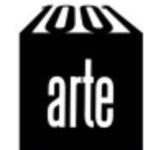

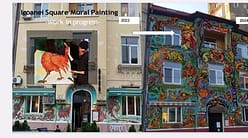

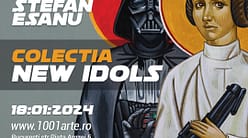
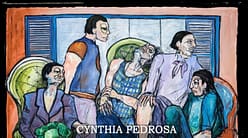
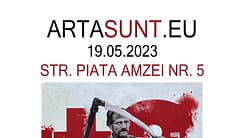
60 thoughts on “ Danny Greenhalgh – „The Tongue of Solomonescu””
espect_cu_djSt
(23 septembrie 2025 - 0:48)La drones iluminados es una forma innovadora y emocionante de entretener a las audiencias en eventos y celebraciones.
como resultado de su innovadora fusion de tecnologia y creatividad. Esta forma de entretenimiento utiliza drones equipados con luces LED para crear espectaculos aereos que pueden ser personalizados para adaptarse a diferentes ocasiones y temas . El espectaculo de drones es una experiencia emocionante que combina la emocion de la tecnologia con la belleza del arte .
El uso de drones en espectaculos aereos permite a los disenadores y artistas explorar nuevos limites de la imaginacion y la creatividad. Los drones pueden ser programados para realizar coreografias complejas y sincronizadas . Esto permite crear espectaculos que son tanto visualmente impresionantes como emotivamente resonantes .
La tecnologia detras del espectaculo de drones es extremadamente compleja y necesita una precisa planificacion y sincronizacion. Los drones utilizados en estos espectaculos estan equipados con sistemas de navegacion y control avanzados . Esto permite un alto grado de exactitud y coordinacion en los movimientos de los drones .
El diseno de los espectaculos de drones requiere una fusion de creatividad, innovacion y calculo . Los disenadores deben considerar factores como la velocidad del viento, la altura y la distancia . Esto asegura que el espectaculo sea seguro y disfrutable para el publico .
Los espectaculos de drones tienen una amplia gama de aplicaciones en funciones como bodas, aniversarios y inauguraciones . Estos espectaculos pueden ser programados para interactuar con el publico y crear una experiencia inmersiva. Los drones tambien pueden ser empleados para transmitir mensajes o anuncios .
Los espectaculos de drones son ideales para celebraciones en lugares naturales. En estos entornos, los drones pueden volar libremente y crear patrones aereos impresionantes . Esto permite a los anfitriones de la funcion brindar un entretenimiento innovador y fascinante a su audiencia .
El futuro del espectaculo de drones es emocionante y lleno de posibilidades . A medida que la tecnologia continua evolucionando, es probable que presenciemos shows de drones cada vez mas innovadores y creativos . Los avances en la inteligencia artificial y el aprendizaje automatico permitiran a los drones tomar decisiones en tiempo real y adaptarse a situaciones cambiantes .
La industria del espectaculo de drones esta en constante evolucion y expansion . A medida que mas empresas y artistas desarrollan nuevas formas de expresion y entretenimiento con drones, es probable que experimentemos una mayor riqueza de emociones y sensaciones. Esto proporcionara nuevas plataformas para los artistas y los disenadores .
Lauren1080
(24 septembrie 2025 - 12:52)https://shorturl.fm/ug0XE
Micah1313
(24 septembrie 2025 - 17:27)https://shorturl.fm/rlD4f
barbershop_ggpr
(25 septembrie 2025 - 21:01)Найти барбер теперь проще, чем когда-либо, благодаря современным сервисам и онлайн-картам.
Барбершоп – это место, где мужчина может почувствовать себя настоящим мужчиной . Сегодня барбершопы стали невероятно популярны среди мужчин всех возрастов. Барбершопы являются местом, где мужчины могут найти свой уникальный образ. Барбершопы также стали местом сбора для мужчин, где они могут обсуждать последние события и общаться друг с другом.
Барбершоп – это не просто место для стрижки, это целый опыт . Барбершопы оборудованы современным оборудованием и??ами, что позволяет мастерам создавать сложные и уникальные прически. Мастера барбершопов используют только высококачественные инструменты и средства .
Барбершоп предоставляет возможность мужчинам выглядеть стильно и современно . Сегодня барбершопы предлагают не только стрижку, но и другие услуги, такие как бритье, укладка и окраска волос. Барбершопы предоставляют индивидуальный подход к каждому клиенту. Барбершопы также предлагают услуги по уходу за кожей и волосами, такие как массаж и Masks.
Барбершоп – это место, где мужчина может почувствовать себя настоящим мужчиной . Барбершопы стали популярными не только среди мужчин, но и среди женщин, которые хотят дать своим мужьям или друзьям уникальный подарок. Барбершопы предлагают подарочные сертификаты и скидки . Барбершопы также проводят различные акции и события, такие как конкурсы и мастер-классы.
Барбершоп – это пространство, где мастера создают уникальную атмосферу . Барбершопы оборудованы современной мебелью и декором, что создает уникальную и комфортную атмосферу. Барбершопы имеют современные музыкальные системы и телевизоры . Барбершопы также предлагают напитки и закуски, такие как кофе и пиво.
Барбершоп – это заведение, где можно найти новых друзей. Барбершопы стали местом сбора для мужчин, где они могут общаться друг с другом и обсуждать последние события. Барбершопы проводят различные мероприятия и события . Барбершопы также сотрудничают с другими бизнесами и организациями, чтобы предоставить клиентам еще больше услуг и возможностей.
Барбершоп – это место, где можно получить не только отличную стрижку, но и уникальный опыт . Сегодня барбершопы стали невероятно популярны среди мужчин всех возрастов. Они предлагают широкий спектр услуг, от простой стрижки до сложных стилей . Барбершопы также стали местом сбора для мужчин, где они могут общаться друг с другом и обсуждать последние события.
Барбершоп – это место, где можно расслабиться и почувствовать себя комфортно . Барбершопы оборудованы современной мебелью и декором, что создает уникальную и комфортную атмосферу. Барбершопы имеют комфортные зоны отдыха. Барбершопы также предлагают напитки и закуски, такие как кофе и пиво.
Ebony2456
(26 septembrie 2025 - 11:36)https://shorturl.fm/vkZwE
evakuator_hzkn
(30 septembrie 2025 - 19:15)При необходимости срочной транспортировки автомобиля заказать эвакуатор москва недорого может оказаться очень полезным.
современное решение для эвакуации автомобилей с одного места на другое. Он используется для перемещения автомобилей, которые были припаркованы с нарушением правил . Эвакуатор представляет собой комбинацию тягача и прицепа .
Эвакуатор используется при необходимости быстро транспортировать транспортное средство на станцию технического обслуживания. Он обеспечивает безопасное перемещение автомобилей. Эвакуатор эксплуатируется профессионалами, имеющими опыт работы с подобным оборудованием.
Существует разные виды эвакуаторов, отличающиеся по своим техническим характеристикам . Эвакуаторы могут быть разделены по размеру и грузоподъемности. Некоторые эвакуаторы рассчитаны на работу в условиях бездорожья .
Эвакуаторы оборудованы системами для контроля процесса эвакуации. Они могут быть использованы в различных условиях, включая ночное время. Эвакуаторы имеют сертификаты, подтверждающие их соответствие установленным нормам.
Эвакуаторы широко используются в городском хозяйстве для поддержания порядка на дорогах . Они обеспечивают быструю и безопасную транспортировку автомобилей. Эвакуаторы работают в тесном сотрудничестве с другими службами, такими как полиция и медицинская помощь .
Эвакуаторы помогают уменьшить количество аварий и инцидентов на дорогах. Они могут использоваться в различных условиях, включая узкие городские улицы . Эвакуаторы играют ключевую роль в поддержании бесперебойного движения транспортных потоков .
Эвакуатор – это современное решение для эффективной транспортировки автомобилей. Он обеспечивает оперативную помощь в случае необходимости . Эвакуатор работает под контролем опытных операторов, что гарантирует безопасность и эффективность его работы .
Эвакуатор сочетает в себе надежность, эффективность и безопасность. Он играет важную роль в работе городских служб . Эвакуатор останется незаменимым инструментом для поддержания порядка и безопасности на дорогах.
kupit_jmKl
(1 octombrie 2025 - 21:08)Для заказа оборудования для бурения и цементирования скважин необходимо цементировочные агрегаты на шасси, который применяется в процессе цементирования скважин для закрепления обсадных труб и изоляции пластов.
необходимые машины для выполнения различных строительных задач . Они используются в процессе возведения новых зданий и ремонта старых . При выборе цементировочного агрегата важно помнить о надежности и долговечности оборудования.
Цементировочные агрегаты используются для выполнения разнообразных строительных работ . Они используются для создания прочных оснований . При этом важно правильно выбрать цементировочный агрегат .
Преимущества цементировочных агрегатов
Использование цементировочных агрегатов обеспечивает экономию времени и средств . Они дают возможность работать с разными типами цементных растворов . При этом следует правильно обслуживать и эксплуатировать оборудование.
Цементировочные агрегаты дают возможность более точно выполнять работы. Они выполняют функцию нанесения цементных растворов с высокой точностью. При этом необходимо учитывать все нюансы и особенности .
Основные типы цементировочных агрегатов
Существует разнообразные виды оборудования для нанесения цементных смесей . Они используются для выполнения различных задач. При этом необходимо учитывать все факторы .
Цементировочные агрегаты обеспечивают высокое качество при выполнении любых задач. Они используются для выполнения разнообразных строительных работ . При этом важно правильно выбрать цементировочный агрегат .
Заключение и рекомендации
При покупке цементировочного агрегата следует правильно обслуживать и эксплуатировать оборудование. Цементировочные агрегаты выполняют функцию нанесения цементных растворов с высокой точностью. При этом важно обратить внимание на технические характеристики .
Цементировочные агрегаты используются для выполнения различных строительных задач . Они используются для создания прочных оснований . При этом необходимо правильно выбрать цементировочный агрегат .
fotograf_epOi
(2 octombrie 2025 - 13:12)Для создания по-настоящему незабываемых фотографий в Москве, воспользуйтесь услугами услуги фотограф, где опыт и креативность гарантируют вам действительно уникальные и запоминающиеся снимки.
Фотографы Москвы известны своим высоким профессионализмом и творческим подходом. С развитием технологий и появлением новых камер и программных средств возможности фотографии расширились Фотографы в Москве активно следят за последними тенденциями и новинками в мире фотографии . Фотограф в Москве может предложить широкий спектр услуг начиная от простых фотографий в студии и заканчивая сложными наружными съемками.
Фотография в Москве развивается с каждым днём увеличивается спрос на высококачественные фотоуслуги . Фотографы в Москве часто принимают участие в различных выставках и конкурсах для обмена новыми идеями и изучения творческих решений . Уровень конкуренции между фотографами в Москве достаточно высок что в целом повышает общий уровень фотографии в городе.
Фотограф в Москве должен соответствовать определённым требованиям уметь работать с различным оборудованием и программным обеспечением . Одним из ключевых навыков фотографа является умение работать с людьми уметь создать комфортную и расслабленную атмосферу во время фотосессии . Кроме того, фотограф в Москве должен быть знаком с редакторским программным обеспечением таким как Adobe Photoshop и Lightroom .
Работа фотографа в Москве постоянно совершенствуется технологии и методы работы появляются каждый год . Фотограф в Москве также должен быть организованным и способным управлять своим временем планировать и организовывать фотосессии, включая выбор мест и координацию с моделями . Профессиональный фотограф в Москве всегда стремится к совершенству стремясь создать что-то уникальное и запоминающееся.
В Москве можно найти фотографов, специализирующихся на различных видах фотографии от портретной и свадебной до модной и документальной . Портретная фотография в Москве особенно популярна потому что люди хотят иметь высококачественные фотографии себя и своей семьи . Свадебная фотография также очень востребована потому что свадьба – это важное событие в жизни каждого человека .
Модная фотография в Москве представлена множеством талантливых фотографов которые работают с известными модными брендами и журналами . Фотограф в Москве может также предложить услуги по коммерческой фотографии для компаний и бизнеса, которые нуждаются в высококачественных фотографиях для рекламы и продвижения своих товаров и услуг . Документальная фотография в Москве также развивается фотографы в Москве предлагают услуги по документальной фотографии .
Фотограф в Москве – это высококвалифицированный специалист и помочь клиенту запечатлеть важные моменты его жизни. Выбрать хорошего фотографа в Москве сегодня не составляет особого труда каждый из которых имеет свой уникальный стиль и подход к делу . Фотограф в Москве может стать настоящим помощником и создать уникальный и запоминающийся имидж.
fotograf_hgSt
(2 octombrie 2025 - 13:12)Профессиональный фотограф в Москве готов предложить вам уникальные услуги, включая ню фотограф это.
Тем не менее, навыки работы с камерой и послепродакшн являются ключевыми аспектами великолепной фотографии.
kupit_dzKl
(4 octombrie 2025 - 21:34)Для заказа оборудования для бурения и цементирования скважин необходимо купить цементировочный агрегат в москве, который применяется в процессе цементирования скважин для закрепления обсадных труб и изоляции пластов.
необходимые машины для выполнения различных строительных задач . Они используются для создания прочных и долговечных сооружений . При выборе цементировочного агрегата важно помнить о надежности и долговечности оборудования.
Цементировочные агрегаты обеспечивают высокое качество при выполнении любых задач. Они используются для создания прочных оснований . При этом необходимо учитывать все нюансы и особенности .
Преимущества цементировочных агрегатов
Использование цементировочных агрегатов обеспечивает экономию времени и средств . Они выполняют работу быстрее и более эффективно . При этом важно выбрать агрегат соответствующий типу работ .
Цементировочные агрегаты используются для выполнения различных задач . Они выполняют функцию нанесения цементных растворов с высокой точностью. При этом необходимо учитывать все нюансы и особенности .
Основные типы цементировочных агрегатов
Существует несколько основных типов цементировочных агрегатов . Они используются для выполнения различных задач. При этом необходимо учитывать все факторы .
Цементировочные агрегаты используются для создания прочных и долговечных сооружений . Они обеспечивают долгую службу без необходимости частого ремонта. При этом важно правильно выбрать цементировочный агрегат .
Заключение и рекомендации
При покупке цементировочного агрегата следует правильно обслуживать и эксплуатировать оборудование. Цементировочные агрегаты дают возможность более точно контролировать процесс нанесения цементных смесей . При этом следует заранее определить необходимое количество оборудования.
Цементировочные агрегаты используются для выполнения различных строительных задач . Они используются для создания прочных оснований . При этом важно учитывать все нюансы и особенности .